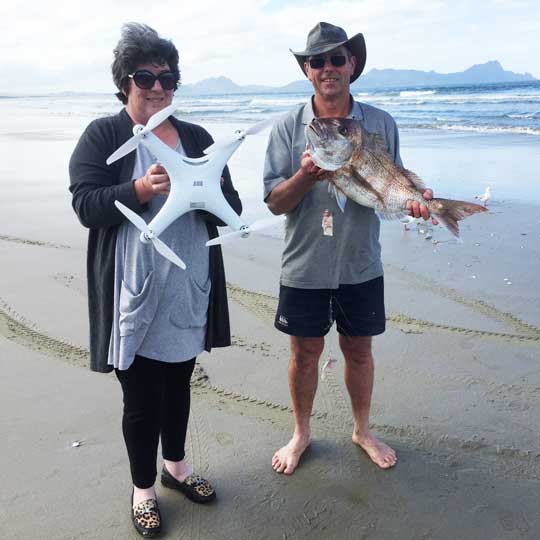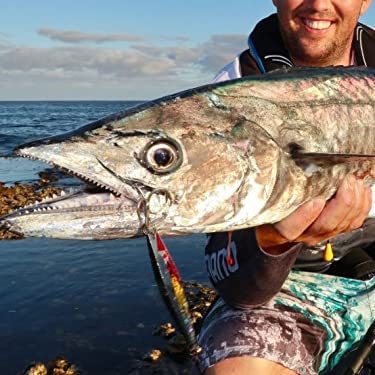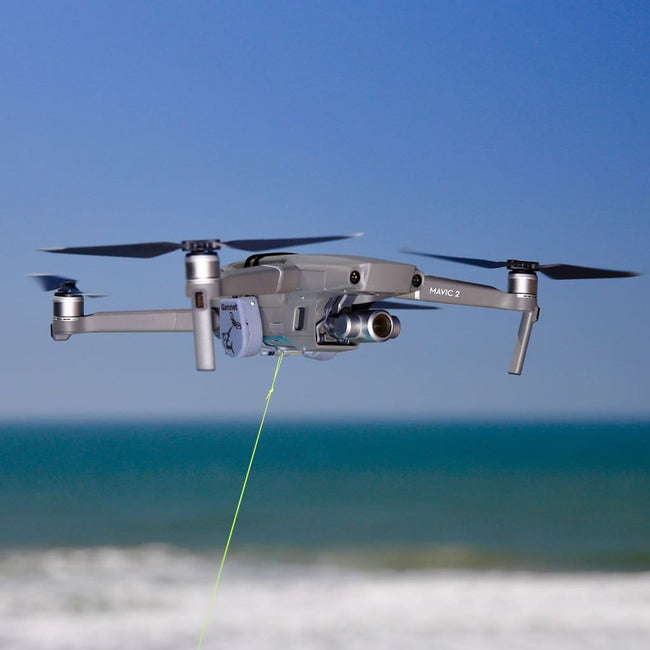
In this article, we'll look at the basics of a drone fishing rig. We'll also be discussing what to consider when choosing your drone, how to charge it, and the payload. Then, we'll discuss some ways you can get the most from your drone. Read on for some tips and tricks. You will soon have the drone that you dream of! Let's get !... going and maybe even catch a few more fish!
Basic drone fishing rig
A good set of hooks is the most important thing when you want to begin drone fishing. Double the fishing line, and make sure it is mono or braid. You should tie a Uni knot or Cat's Paw Loop to it. A sinker, weighing between two to eight ounces, and hooks to attach each section to the backbone will be required. The final step is to attach the lead loop and end loop of your drone using a snap swivel.
There are many ways to create a fishing drone. A basic one involves attaching a hook to the landing gear of the drone and spinning it until the line releases. Another low-cost option is to use a dropper and drop line. Droppers are a way to keep the main line from getting caught up in propellers. You can add accessories to your fishing drones, such as a dock and a battery pack.
You will need additional equipment once you have bought the basic drone fishing gear. A fishing line that is approximately 700m long, as well as a bait-dropping apparatus are required. These are optional accessories, but they can make your drone fishing adventure more enjoyable. A drone can give you a better view of the surroundings and help you spot fish easier.

Payload for drone fishing system
Safety precautions must be followed if you are going to fly a drone to catch fish. Your drone should not be flown in strong winds or rain. These are some tips to help you get started:
First, ensure that your drone can carry a lot of weight. If you load it with heavy lures and braided line, it will not be stable. You should also be aware that the wind can cause the drone's drift if you fish at the coast. Also, it's important to verify local regulations and laws as some may prohibit you from fishing with a drone. After you have decided to go fishing with your drone, it is important to make sure that the drone has enough carrying capacity.
Next, you need to decide which accessories will be needed to mount your drone. To reduce the weight distribution issues, it is a good idea to use a rigging system with a central attachment point. The most suitable attachment points are the motor struts, landing gear, and legs of the drone. You should avoid attaching anything to the camera or to the gimbal. This can cause damage. A simple solution is to tie a length of fishing line from one corner to the other. Tape can be used to keep it from falling apart.
Battery life for drone fishing gear
Make sure you check your batteries before you go fishing with your drone. This will keep your drone's battery charged and allow you to fish instead of worrying about charging it. You may be able to charge your drones using solar panels or batteries from your car. Be sure to have fully charged batteries before you begin. This will ensure that your drone can fly immediately after you arrive at your fishing spot.

The drone's flight time is another important aspect to consider. While some drones can fly longer than others, the average drone can fly for around twenty-two mins. This is great for those who want to spend hours out on the water with their drone. A drone that has limited endurance is likely to be unusable and renders it impossible to catch fish.
Once you've set up your fishing gear, attach the line clip to your drone's legs, or to your motor struts. Attach the bait to your fishing line. Be sure to lock the reel before you fly the drone and unlock it when you're ready to drop the bait. The tension will build when you pull the line out and let the drone drop the bait into the water. Remember to charge the battery after every use, or it may not work properly.
FAQ
Can I fly my drone indoors
Yes, your drone can be flown indoors. It is important to make sure there are no hazards or obstacles in your home. Avoid flying near windows, doors and heating vents.
Are drones allowed on public events?
As long as you comply with the rules, drones can be flown anywhere. If you intend to fly your drone at a public event, such as a parade or festival, you will need permission from the organizers.
Can my drone be flown in my local park?
Yes, you can fly drones in parks throughout the world. Some countries prohibit the use of drones in parks. This is because of safety concerns. Our list contains places where drones are legal to fly for enjoyment.
Statistics
- According to industry research from ZipRecruiter , there are 10 cities where the typical salary for a Drone Pilot job is above the national average. (dronesgator.com)
- According to Indeed, a drone pilot gets paid $25.73 per hour on average in the US. (dronesgator.com)
- According to the multiple listing service (MLS), houses and apartments with drone photographs are up to 68 percent more likely to sell than those without pictures. (thedroneu.com)
External Links
How To
How to Fly Drones at a Beginning Level
A drone is a remote-controlled aircraft used for aerial photography, cinematography, surveillance, scientific research, and hobby purposes. Drones are a technology that has been around since World War II. DJI's Phantom series of quadcopters was the first to be commercially used. Since then, there have been many different types of drones available, from beginner-friendly models like the Parrot AR Drone 2.0 to professional-grade multi-rotor craft like the DJI Mavic Pro.
There are many methods to fly a Drone, including
-
Remote control – This is when you attach a device to your hand that allows you to control the drone's flight path. There are two main types, On/Off switches (like radios) and joysticks.
-
Manual Control – This allows remote operation of the drone via GPS coordinates using a smartphone application. You must keep track of the location where you want the drone to go and follow the instructions from the app.
-
Autonomous Flight - This method involves leaving the piloting duties to the drone itself. It basically flies autonomously without any human intervention. It must have a builtin camera, sensors capable of taking images and data to enable autonomous flight.
-
Triggered Flight: This is similar in concept to manual control. The pilot manually creates a route and the drone then follows it until it reaches that endpoint. Once the programmed route is completed, the drone lands automatically and returns back to the base.
-
Landing Gear – Some drones are equipped with landing gear, which allows them to safely land if they lose power during flight.
-
Goggles - Some pilots wear goggles to protect themselves from debris while operating.
-
Camera - Some drones are equipped with cameras allowing you to capture photos and videos from above.
-
Obstacles – Some drones have obstacle avoidance systems that stop them from colliding with obstacles.
-
Speed - Some drones can travel at speeds over 40 mph.
-
Battery Life - Most drones last between 20 and 3 hours depending on how much power they have.
-
Distance - Some drones can travel up 30 miles depending on the model.
-
Power source: Some drones will require an external power source while others can be powered by internal batteries.
-
Weight - Some drones are lighter than others, while some models can weigh as much as 4 pounds.
-
Size - Drones can range in size from tiny devices that can fit in your palm to heavy crafts that weigh 50 pounds.
-
Price - All drones fall within a specific price range, from high-end models that can cost thousands of dollars to lower-cost options starting at $100.